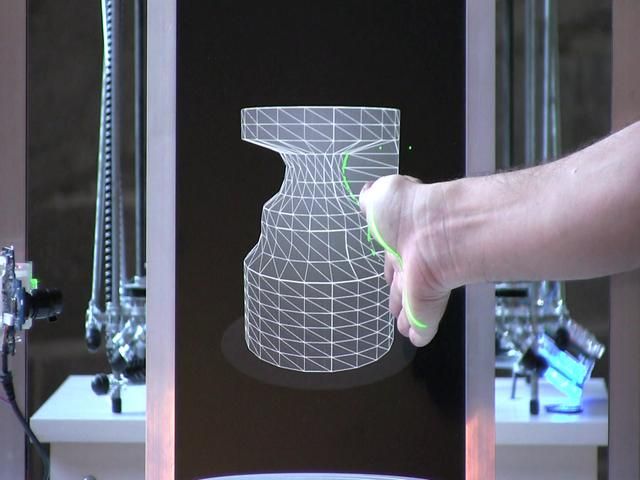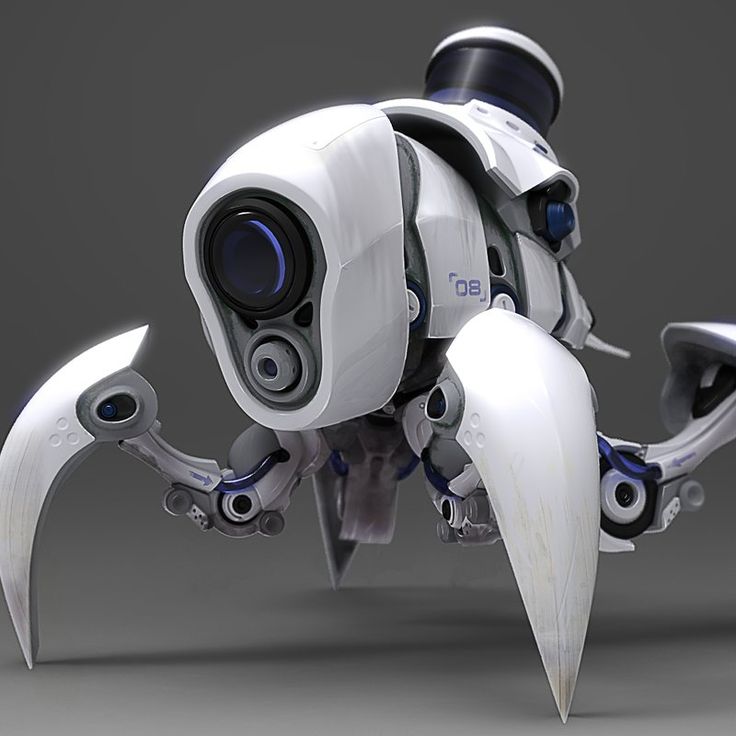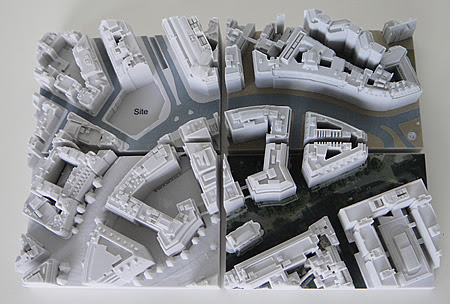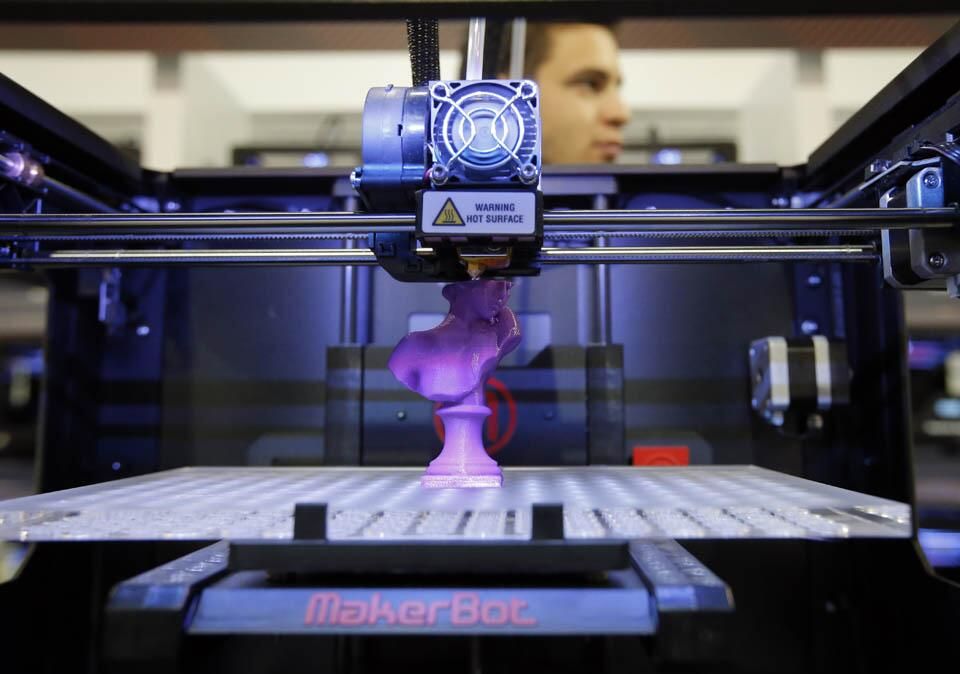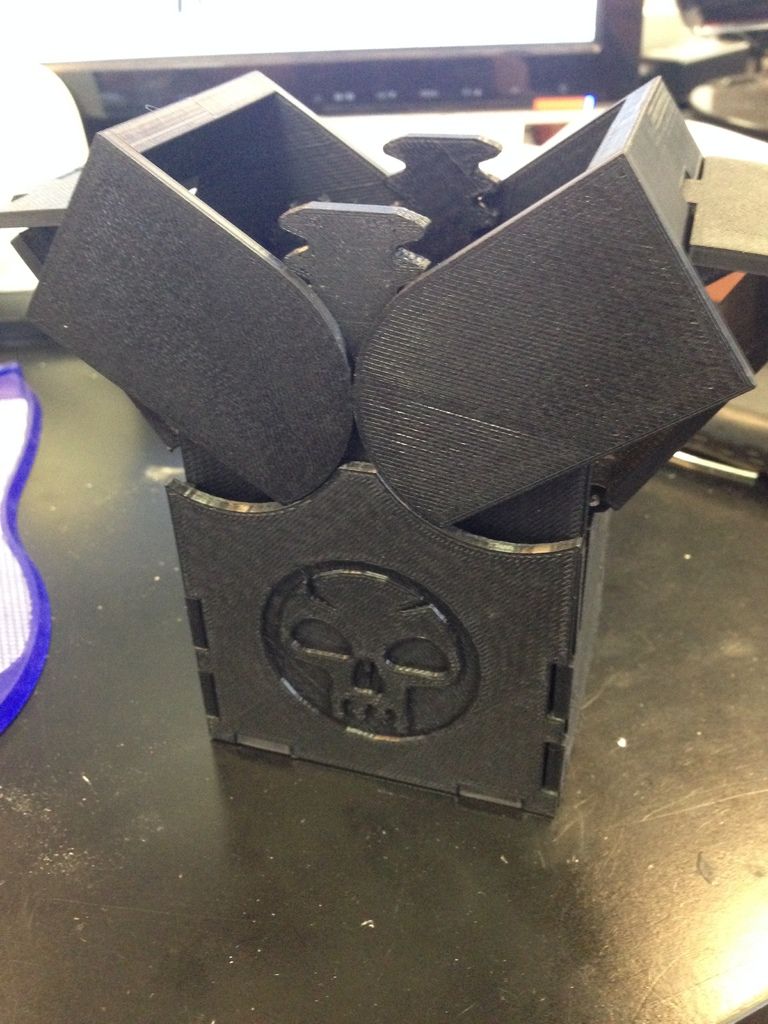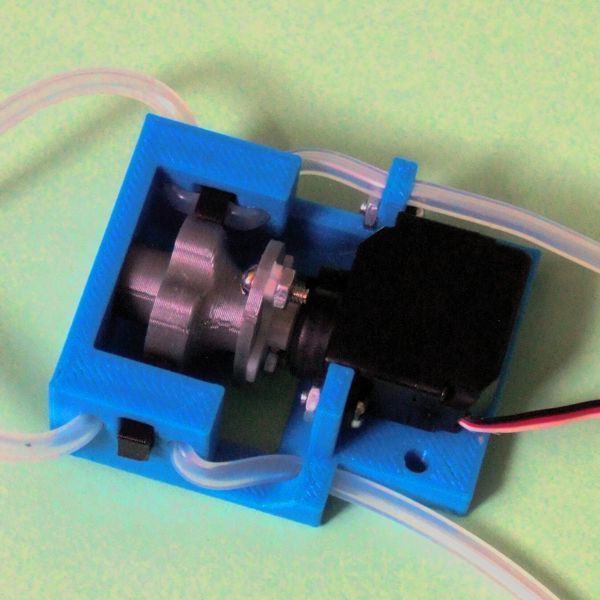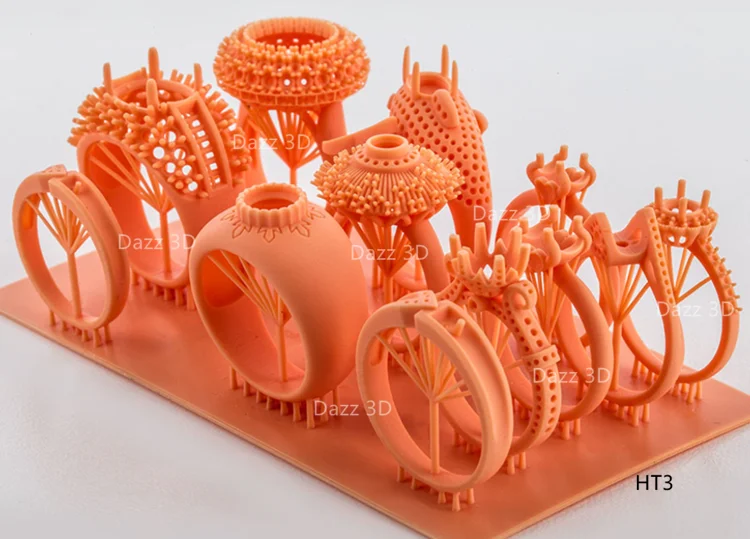Can you 3d print fabric
3D printing on fabric - Art and new techniques
3D printing on fabric: an innovative technique
3D p3D printing always surprises us with its wide range of applications: here, we’ll discover a new technique to create shapes. It’s an innovative way to design: algorithms are used to generate patterns of curves that, through tensions, develop structures.
Design is always influenced by manufacturing, and the change in a process also changes the way to think about shapes that can be reached. The progress of technology permits to rethink of esthetics and creates new cultural values.
Can 3D printers print on fabric?
3D printers can print on fabric, and It is effortless to do! You can easily create new shapes or give a new life to your old fabrics with any printer you have. Here are some tips to print and some case studies from which you can get inspiration.
How to 3D print on fabric
3D printing on fabric is easy, and it doesn’t require many other additional components. The only things you need are pins and, in some cases, a platform to raise the printing bed. In this workshop, students learned how to print on textile with their small printers, Delta WASP 2040 PRO. Trying small pieces before shifting to a larger scale is really useful.
The more difficult part is the design process: when you print you don’t see the final result until you release the tensions of the pins on the textile. This can be really exciting, for the continous experiments and the discovery of new shapes. It’s a totally different way to design.
The textile needs to be stretched on the bed and fixed well to print the layer of curves in the same way. If it is not tested regularly, It can lead to deformed geometry.When the melted filament is deposited on the fabric, it merges with the material, and with the cooling, they are united forever.
Click here to see the full workshop article
Fashion industry: 3D printed clothes
We will see how 3D printing is revolutionizing the fashion industry.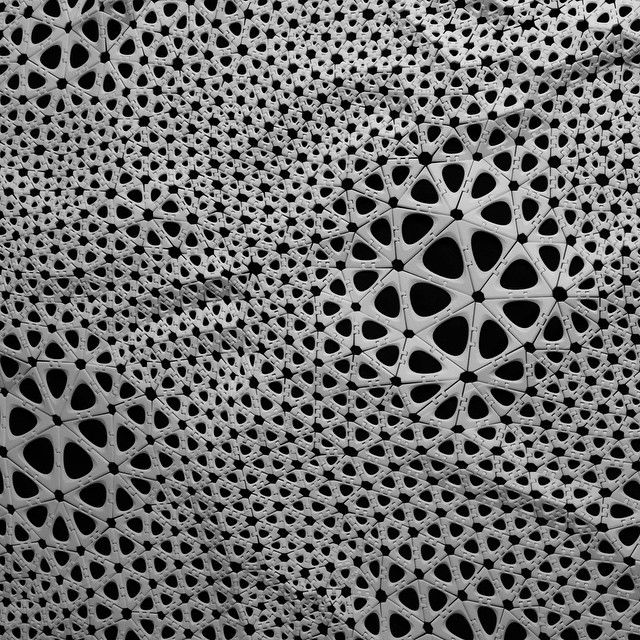 It’s a new technology in this field, so not many people know how and why to use it. Plus, the design of the clothes is complex: it requires knowledge of 3D modeling and 3D printing. But it’s also a new way to visualize the artwork more realistically.Until now, it has been confined to Haute Couture, artists, and passionate hobbyists.
It’s a new technology in this field, so not many people know how and why to use it. Plus, the design of the clothes is complex: it requires knowledge of 3D modeling and 3D printing. But it’s also a new way to visualize the artwork more realistically.Until now, it has been confined to Haute Couture, artists, and passionate hobbyists.
As we expected, the knowledge and enthusiasm are spreading worldwide, and there are many examples also in the mass fashion market. Other than accessories, 3D printing is used more for shoes, bags, and functional clothes. Also, NASA has its research laboratory where scientists study how to upgrade spacesuits with 3D printing.
Flexible filament
The materials that suit the creation process of 3D printed clothes are those with flexible features. TPU is the most used filament to create objects that need to be in contact with skin because it adapts its shape to body curves. So it is widespread in medical and fashion fields. For example, Balenciaga released new pair of 3d printed decolletè, all made in transparent TPU.
For example, Balenciaga released new pair of 3d printed decolletè, all made in transparent TPU.
Haute couture: Iris Van Herpen
Iris Van Herpen is for sure one of the most iconic example of 3d printed artworks in fashion industry. Her stunning dresses are famous worldwide, worn by actors and singers in gran galà and other important events. Her creations are unique pieces, like sculptures.
She has always combined art and technology, inspired by Leonardo Da Vinci mindset. Nature is her biggest counselor and all colors and shapes combinations come from animals and plants. This interest in nature and eco-systems leads Iris to care about sustainability and the purpose to create pieces environment-friendly.
Fashion and sustainability
Sustainability is one of our generation’s battles: choosing the suitable materials to produce in a more respectful way for the planet. Fashion is under pressure for the continuous turnover of new clothes production every season.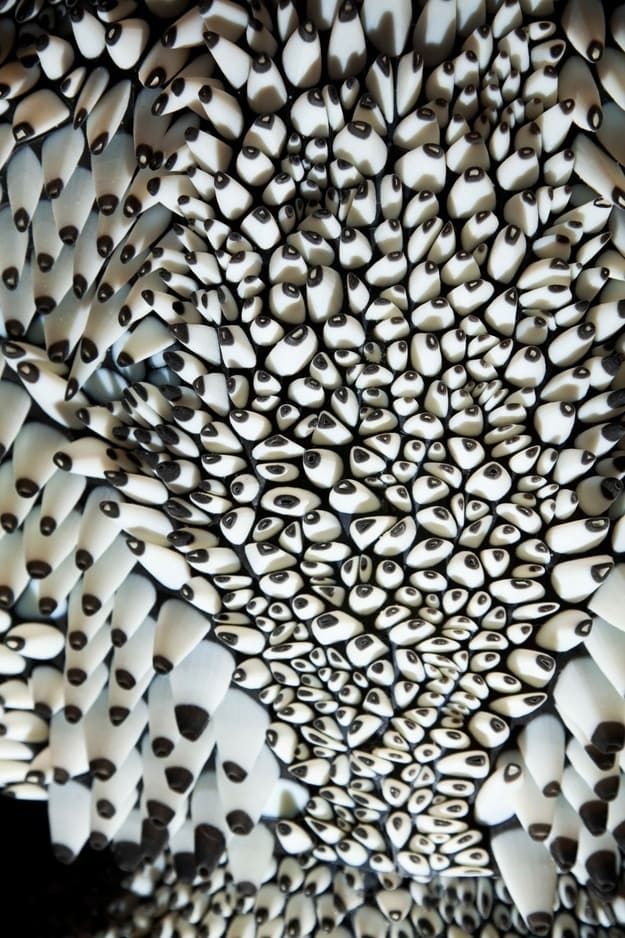
Fast fashion is one of the problems of these times, so everybody is now focused on trying to reduce the impact of the industry. 3D printing is a valid partner to face it because it permits avoiding waste of materials and can use recycled materials.
A student creates her 3D printed fashion line
Milan-based student of Politecnico di Milano, Chiara Giusti, has designed and produced a clothing line for her University project. She printed her collection at Superforma, Milan WASP Hub, using WASP’s large-scale 3D printer 3MT.
Chiara aims to create fashion and comfortable clothes, adding complex 3D printed patterns to textiles. This example demonstrates that 3D printing clothes can be done by everyone simply at home (with a little bit of practice).
Art, design and architecture
3D printing on textile is interesting to create something to wear, but it can also be a way to build remarkable structures and furniture pieces.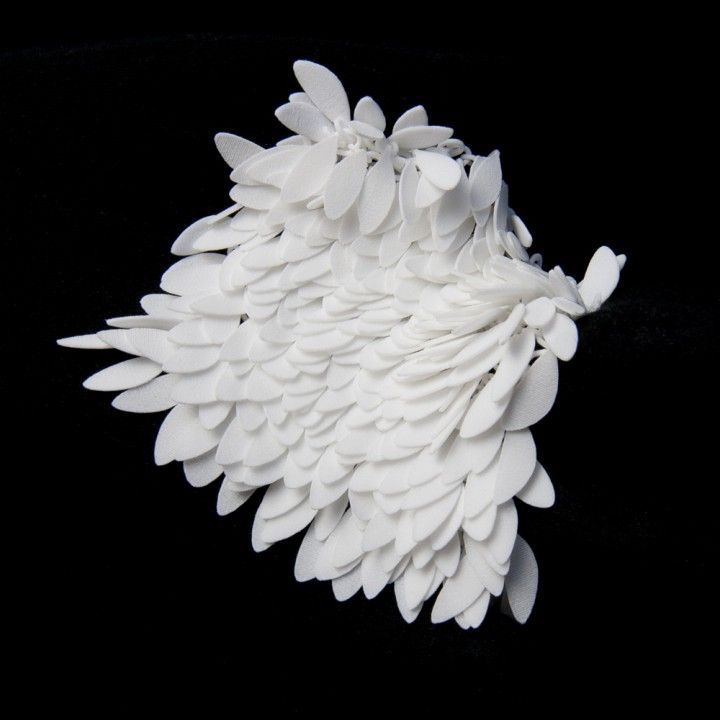 The rigidity that 3D printed curves bring to the textile creates a steady system that can sustain itself.
The rigidity that 3D printed curves bring to the textile creates a steady system that can sustain itself.
The shapes created on fabric are also interesting for furniture pieces like lamps. In these examples, created by Drag and Drop Design studio, emerges the structure and the articulate shape achievable with this process.
This large-scale piece exemplifies how 3D printing on fabric can also be applied to significant structures and challenge how we build installations and structures. This effect of soft spikes comes from the tensions of printed layers on the textile.
Large scale 3D printer
Delta WASP 3MT INDUSTRIAL 4.0All these masterpieces have been created with the 3MT 3D printer. This is the best printer for creating medium-large pieces thanks to its wide printing bed area of 1m in diameter.
Can You Make Clothes with a 3D Printer? – 3D Printerly
Making clothes with a 3D printer is something that people think about, but is it actually possible to do this? I’ll answer that question in this article so you know more about 3D printing in the fashion industry.
Keep on reading for more information about making clothes with a 3D printer.
Can Clothes Be 3D Printed? Making Clothes with a 3D Printer
Yes, clothes can be 3D printed, but not for standard everyday wear. They are more of a niche or experimental fashion statement that have been seen on runways and in the high fashion industry. It’s even possible to use a 3D printer setup to spin real yarn into clothing, using a method of layering and connecting.
Sew Printed did a great video explaining five different ways to 3D print fabrics and textiles, which you can check below.
Check out some examples of 3D printed clothing:
- Triangulated Dress
- Fancy Bowtie
- Chainmail-Like Fabric
- MarketBelt
As with any new technology, people are always experimenting and finding out new ways to produce clothes from 3D printers.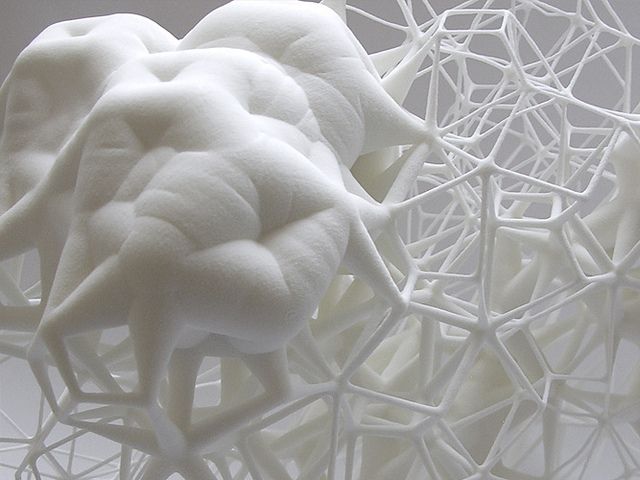
One user described their own method for making textiles with a 3D printer using a wide range of yarns (synthetic and natural), that doesn’t produce waste as yarns can be disassembled and reutilized.
The fibers aren’t stitched or woven, the yarn is actually melted but not entirely fused in a way it is still a continuous strand when applied.
They are calling the fabric 3DZero as it is 3D printed and produces zero waste, once you have the raw materials you can just re-use them. Their goal is local production on demand and fully personalized.
Best 3D Printed Clothing Designers – Dresses & More
Some of the best 3D printed clothing designers and brands are:
- Casca
- Daniel Christian Tang
- Julia Koerner
- Danit Peleg
Casca
Casca is a Canadian brand, trying to implement 3D printing fashion as a sustainable alternative to fast fashion. Casca’s philosophy is centered around the motto “less things that do more”.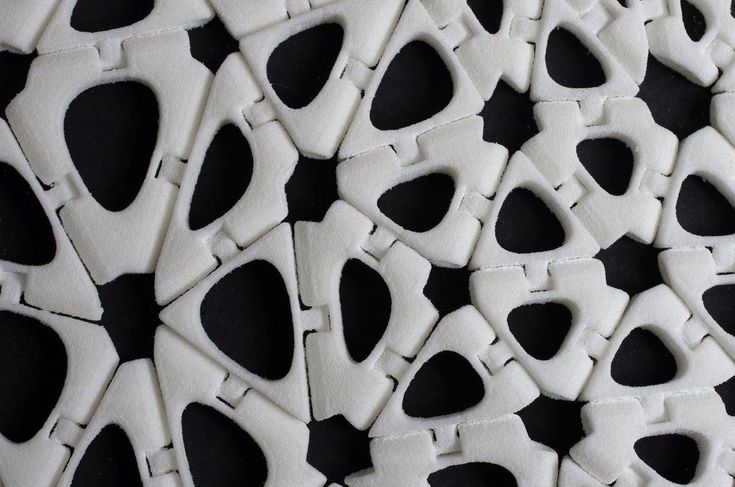
One pair of their shoes is meant to replace several pairs of normal shoes. For that to work, Casca created 3D printed custom insoles. The customer selects the desired footwear and size and after that, you will download the Casca app to get a scan of your feet.
When the scan is confirmed and complete, they will craft the flexible, custom insole via 3D printing along with the ordered design and size.
So that they won’t produce further waste and consumption, Casca produces only in small batches, reordering whenever the styles have sold out. They hope to fully decentralize the supply chain by manufacturing 100% custom-fit shoes in-store by 2029.
Casca founders talked with ZDnet on video and explained their entire vision when building a brand based on 3D printing technology.
Daniel Christian Tang
Another big market in 3D printed wearables is jewelry. Daniel Christian Tang, a luxury jewelry brand, uses architectural modeling software in tandem with 3D digital manufacturing technology.
Daniel Christian Tang, a luxury jewelry brand, uses architectural modeling software in tandem with 3D digital manufacturing technology.
They design rings, earrings, bracelets and necklaces, and they are cast in gold, rose gold, platinum and sterling silver.
You can see their founders talking about the world of 3D printed luxury jewelry just below.
One user has expressed how he thinks 3D printing is here to stay in the jewelry industry, mainly for its job creating waxes.
One user made a lovely ‘floating’ necklace that looks really nice.
I 3D printed a ‘floating’ necklace. 🙂 from 3Dprinting
A lot of the 3D printed clothes that have been showcased have been there for novelty but there is a real market for 3D printed shoes and prescription glasses, among other things.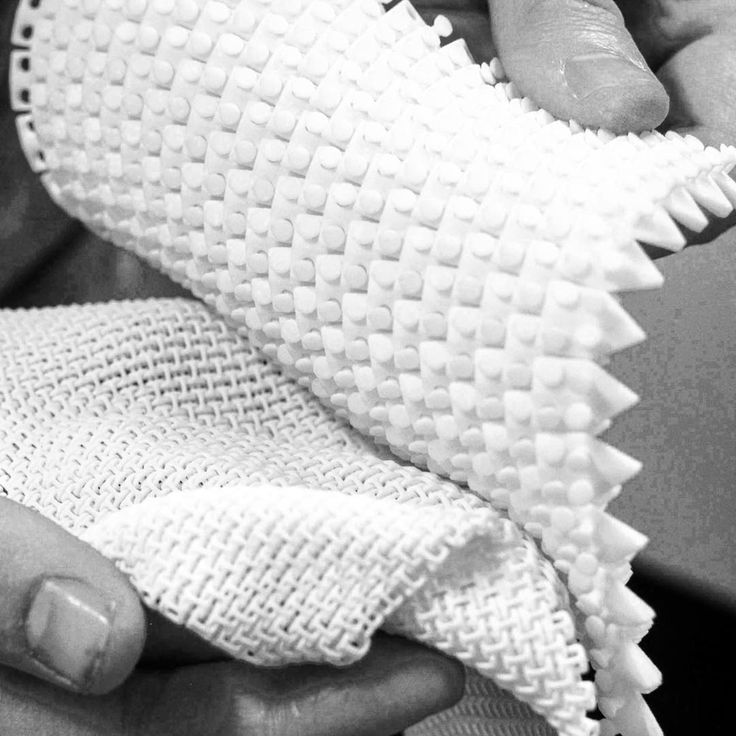
3D printed fashion
Julia Koerner
Another designer making use of 3D printing in clothing design is Julia Koerner, who worked on 3D printed clothing for the marvel movie “Black Panther”, creating the head pieces for many of the Wakanda residents, as she explains in the video below.
Danit Peleg
Danit Peleg, a design pioneer, started to redefine the status quo by designing printable clothing with sustainable materials and using techniques that cut out the inflating supply chain.
What makes Peleg’s highly desired fashion line truly is that not only can customers personalize their pieces, but they receive the digital files of the clothing so they can have it printed through a 3D printer closest to them.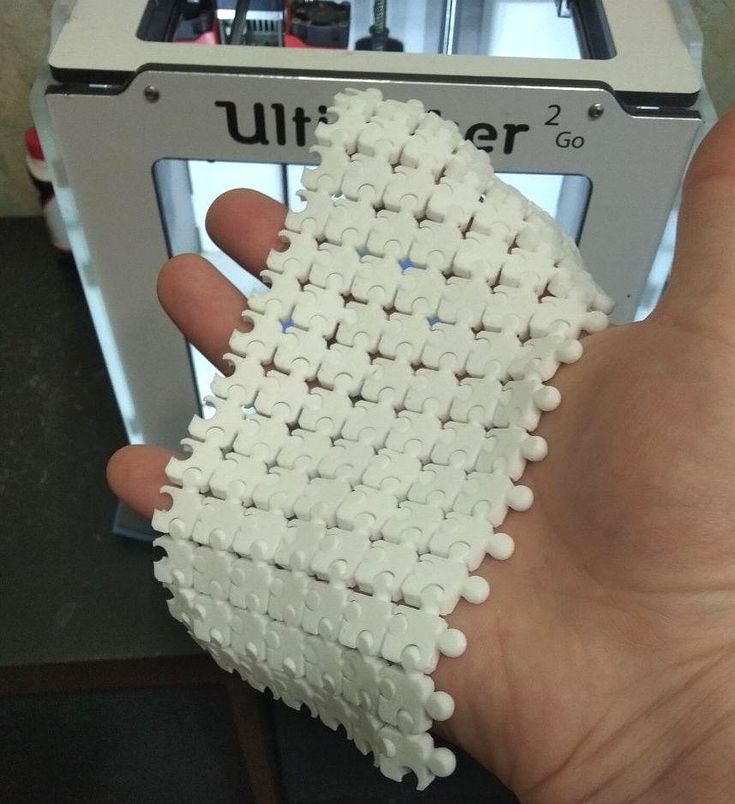
Check out Danit making 3D printed clothing in her own home.
In 2018, Forbes recognized Peleg as one of Europe’s Top 50 Women in Tech, and she was featured in the New York Times and the Wall Street Journal. Danit has been very passionate about creating a new wave of sustainable 3D printed clothes.
She is using her passion to invest time in learning about 3D printing in ways that could revolutionize the industry.
A breakthrough came for Danit when she began using a durable and flexible filament called FilaFlex, one of the most elastic filaments reaching 650% stretch to break. The filament was a perfect match for Danit’s flexible creations.
After a lot of research, Danit selected the Craftbot Flow Idex 3D printer since it was able to print FilaFlex well, having great efficiency and precision.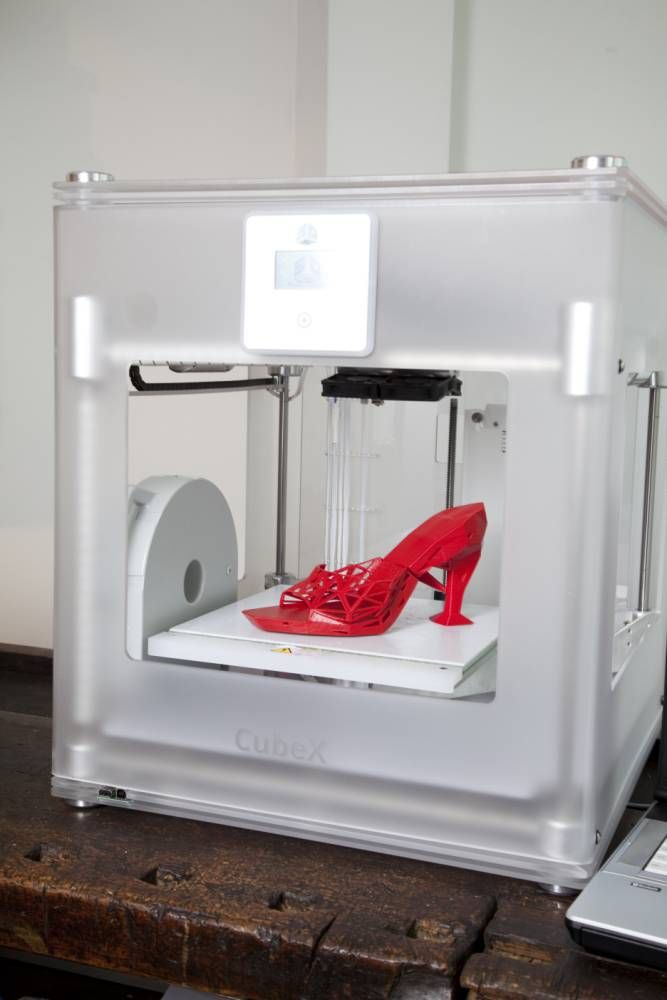
The Craftbot team continues developing new software and hardware technologies for filament printing, including Craftware Pro, a proprietary slicer program that offers tons of innovative features for professional printing applications.
Danit explains that and much more at her TED talk about the 3D print revolution in fashion.
Is 3D Printing Clothes Sustainable?Yes, 3D printing clothes is sustainable because it is an environmentally friendly option for those in the fashion industry. You can use recycled plastic to create many items and many fashion distributors are using biodegradable materials to 3D print their clothes.
You can also recycle your own 3D printed clothes, have manufacturers work with less inventory, reduce waste production and change the impact of the fashion industry on the environment.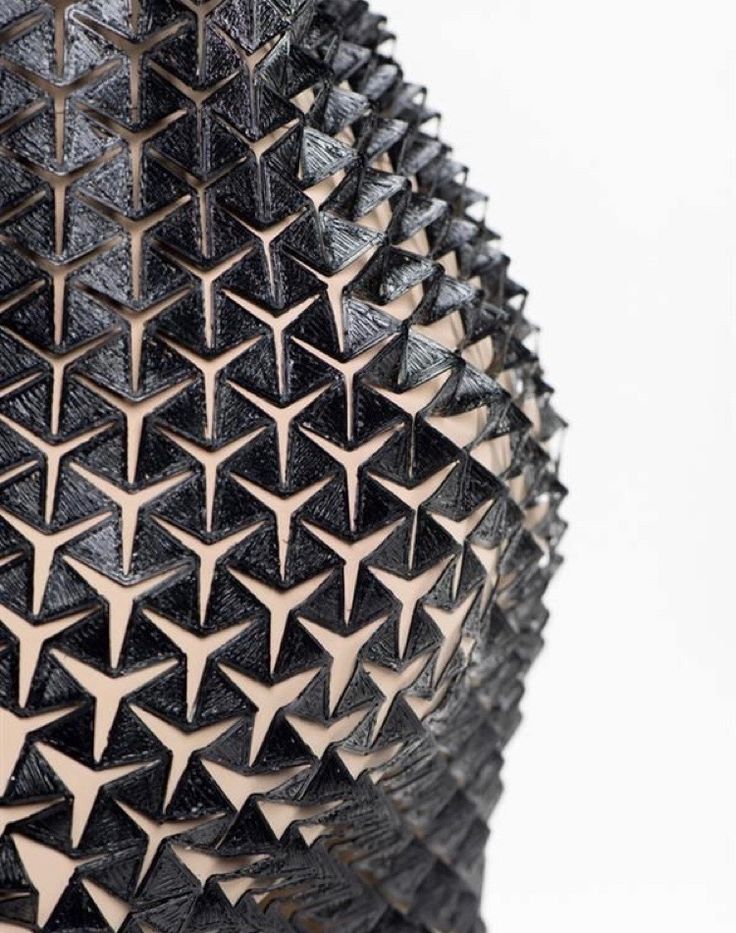
One of the biggest benefits to this is how you can reduce carbon emissions through not having to transport the 3D printed clothing far distances. If you have the 3D printing file, you can find a 3D printer close to you and create it locally.
That’s why 3D printed clothing is considered one of the most promising technologies when it comes to making the fashion world more sustainable as the never ending demand of the fast fashion industry adds only more pressure on cheap labor around the world.
Many big brands are coming up with new processes to improve or change their production models, trying to be more eco-friendly.
Technology like 3D printing has the ability to create something new for the industry, and does it sustainably. If the brands want to improve production and their distribution of goods, they must head towards innovative technologies that will really disrupt the sector.
At least one user is looking to never buy clothes again after learning how to 3D print his own shirt.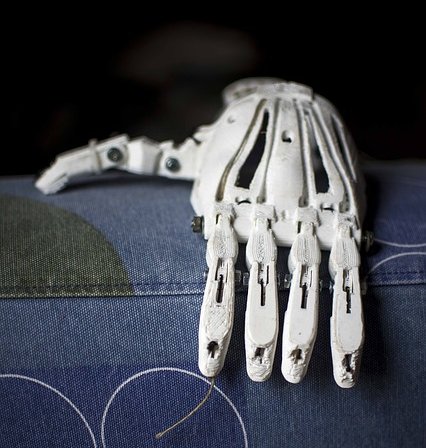 He even made the file of his newly 3D Printed Shirt V1 available online.
He even made the file of his newly 3D Printed Shirt V1 available online.
Check out the video he made below.
I made a fully 3D printed shirt to go with my 3D printed necktie! Never buy clothes again! from 3Dprinting
With billions of clothing items being manufactured every year, finding effective and sustainable solutions to the global clothing demand is crucial as we continue to face market issues. It is necessary for us to innovate and adopt more sustainable and cost-effective ways of making our clothes.
3D printing also allows you to salvage and recover clothes faster than you would if you traditionally sewed them.
This happens because the threads are molded together instead of sewn, and you can easily separate them if you make any mistakes while printing, significantly reducing the likelihood of your thread breaking.
You can also disassemble the fabric and get back yarns for re-using as explained by one user.
3D Printing fabrics/clothes and how we are doing it! Here front panel of our TShirt.
from 3Dprinting
Benefits of 3D Printing in Fashion
Some of the main benefits of 3D printing in fashion are:
- Recyclability
- Minimal Inventory
- Sustainability
- Custom designs
Recyclability
One of the nicest aspects of 3D printing clothing is that these clothes are more recyclable. 3D printed items can be turned into powder with the help of the proper machinery and then can be used to create more 3D items.
That way, a piece of clothing can last a very long time as it can be recycled over and over again.
Minimal Inventory
3D printing also provides an innovative solution to one of fashion’s biggest problems: overproduction. Printing on demand produces less waste and reduces the amount of unused clothes.
That means minimal inventory, you only make what you sell.
This reduces the number of manufacturers making clothes in large quantities with many items that never sell and end up generating waste and pollution.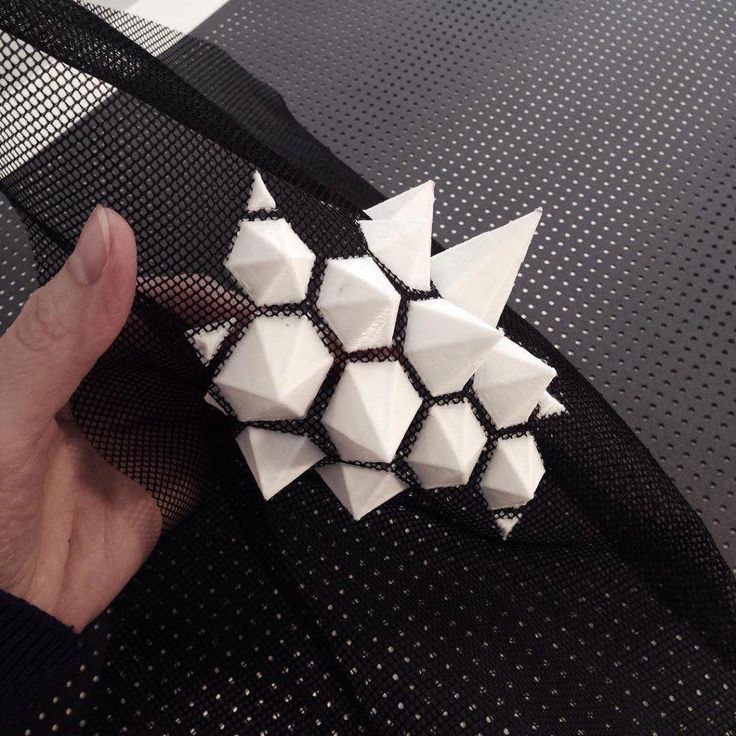
Sustainability
According to Julia Daviy in her video below, 3D printing can drastically decrease the textile industry’s terrible impact on local wildlife and farmland and the communities that surround it.
A lot of designers use 3D printing for these reasons. It is a more sustainable method, creates less inventory and moves the final product faster. It is a more eco-friendly way to create clothes because it destroys unused materials and fabric.
If you are printing a shirt, you’ll use the exact number of materials needed. No need to buy or waste extra fabric by throwing off additional materials as you would when sewing.
It’s an additive manufacturing method, which means you don’t have the same amount of waste afterwards.
Custom Designs
One of the biggest benefits of 3D printing your own clothes is choosing your own design, having total control over size and shape and creating your own custom clothes that no one else in the world will have, unless of course, you decide to share the file online!
As people are slowly starting to 3D print some clothes at home, one user 3D printed a bikini top and says it turned out pretty comfortable!
Naomi Wu made a whole video showing the process of her creating a 3D printed bikini top.
Disadvantages of 3D Printing in FashionSome of the biggest disadvantages of 3D printing in fashion are:
- Time
- Complex design
- Environmental impact
Time
Time is one of the biggest disadvantages of 3D printing in fashion. Peleg’s custom 3D printed bomber jackets take an astonishing 100 hours to print.
Peleg’s custom 3D printed bomber jackets take an astonishing 100 hours to print.
Even with the advances the technology has seen, which improved printing time from days to minutes, a complex clothing piece can still take a long time to be 3D printed.
Complex Design
There are more challenges to 3D print clothes yourself. You need a complex design, that is strong and robust, and you might need to manipulate the materials and do some hand fashion to perfect your design.
While many people prefer to use large-formats to 3D print clothes, you can choose from multiple approaches. Creating several small hollow objects and locking them together will create a weaving pattern. You can then change the shape and size, getting your own custom design.
Changing your 3D printer’s settings and removing the walls from your objects can also help to create a flat fabric. Several users also suggest to print unheated when printing onto fabric to avoid the chance of melting.
Environmental Impact
3D printed clothes are a lot more eco-friendly than the rest of the fashion industry, but 3D printers also create waste that can not be disposed properly as some printers generate tons of plastic from failed prints.
One user voiced worry about the environmental impact of 3D printers. Some materials like PETG are very easy to recycle, while others can be harder to do.
While many big brands move to start making their own 3D printed outfits or accessories, from Nike to NASA, it still may take a while for the everyday consumer to see it in the shop around the corner.
Still, advances are being made in filament research creating new possibilities for texture and flexibility. For now, you can create rare and individual clothes using a 3D printer with more control over design and sizing, but we still will be stuck with fast fashion for a while.
3D printing on fabric - technology features. Methods for applying three-dimensional images to fabric, phone cases, promotional products
Today, 3D printing on fabric is a fairly popular way to create exclusive items. This type of drawing, due to the visual volume and realism, easily attracts attention, which means that it will be in demand among people of different ages for a long time to come.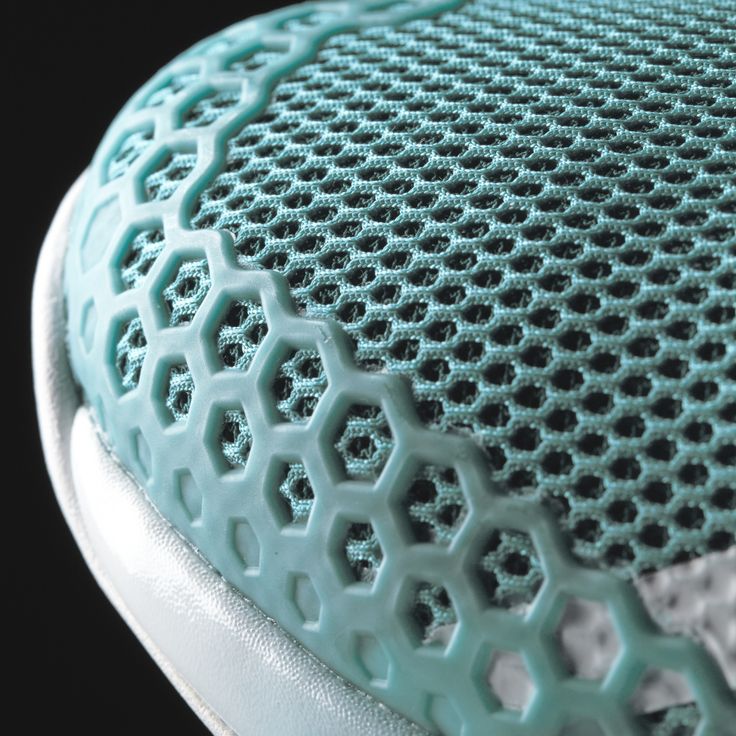
You can apply 3D drawings on different types of textiles, namely:
- On natural fabrics.
- For synthetic fabrics.
- For tarpaulin.
This type of print is also often used for large format printing, for example, for wallpapers, theatrical scenery or exhibitions. The range of use and application of this type of image is great, it would be a fantasy.
3D wallpapers can transform any space
For example, 3D printing on phone cases has also become a fairly popular service among the population.
3D printing on fabric
In order for 3D printing to be applied by the desired method and the image to be bright and durable, it is necessary to take into account a number of factors when choosing the fabric on which the pattern will be applied. Namely, you need to pay attention to:
- Material composition.
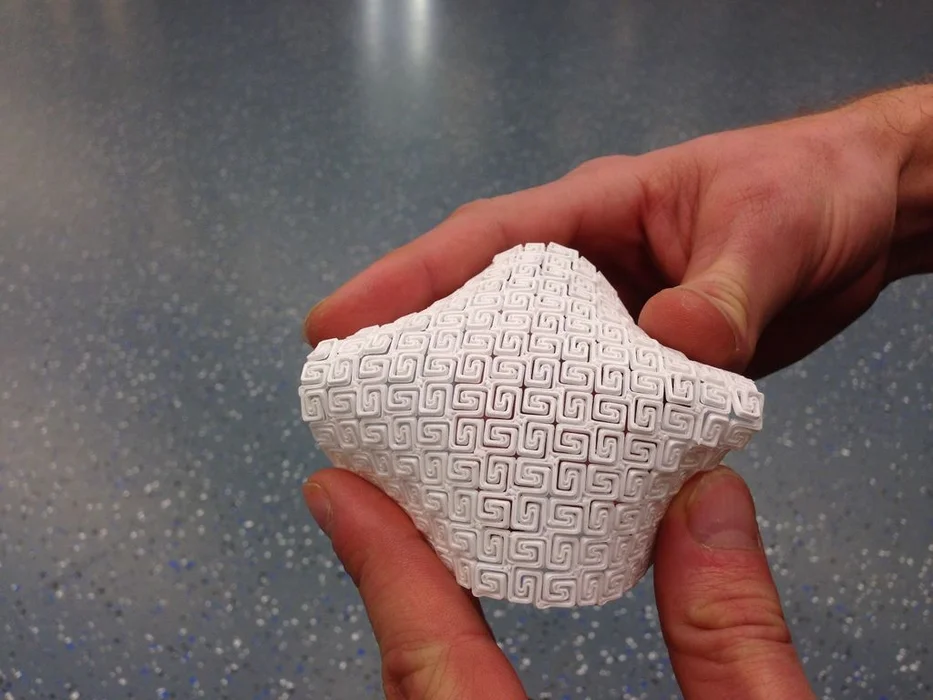
- Structure.
- Density.
- Processing.
- Storage conditions for textiles.
Fabrics can be of textile and knitted weaving. Materials with textile weaving - jeans, linen, silk, velveteen, satin, and with knitted - footer, cooler, interlock, etc.
3D printing is an original way of applying high-quality images of any complexity to fabrics or clothes. Thanks to the latest printing technologies, such designs will perfectly behave after numerous washings and ironings. The main thing is to choose the right transfer method for the image.
There are several technologies for applying images of this type to textiles:
- Digital printing. The image is applied directly to the fabric, without the use of additional media.
- Sublimation. A special dye is used that penetrates the fibers without changing the properties of the material.
- Screen printing.
 Drawing is applied through a special stencil by pushing paint, viscous consistency.
Drawing is applied through a special stencil by pushing paint, viscous consistency. - Thermal transfer printing. Used film or paper, high temperature and heat press.
All of these 3D printing methods have their pros and cons. For example, digital printing is most often used because of its inexpensive cost, and the silk-screen printing method makes the image durable even on rough fabrics. But the sublimation method limits the client in the choice of fabric, as it is applied only to synthetic materials, but the colors of the image will remain for a long time. So if you need a print on a product that will not lose its appearance for a long time, then it is better to choose a sublimation printing method on a synthetic or semi-synthetic canvas.
3D printing on fabric and not only from PROpechat
Today, few people do not know what 3D printing is. Images of this type can be used for different purposes due to the originality of the result.
For example, it is practical and profitable to use this type of pattern for advertising purposes to attract customers - printing a three-dimensional image of the company logo will clearly attract potential buyers or partners. So the considered option of applying a print is not only a way to transfer pictures, but also an excellent method of promoting a business.
And so, we draw conclusions. In order for the image to turn out as realistic and durable as possible, it is necessary to take into account only a few components:
- Choice of 3D printing technology.
- Selection of the material on which the image will be applied.
- Scope of the finished product.
3D printing on fabric and more is a great way to make an original piece of furniture, a souvenir, promotional items, etc. So turn on your imagination and act. Have questions? Call us right now or contact the manager online!
3D printed mesh fabric
Prologue
Hello everyone! I am developing "smart sequins" - electromechanical color-reproducing devices for designer clothes. Our team is passionate about the idea of creating clothes and accessories that can change their color at the request of the owner or depending on environmental conditions.
Our team is passionate about the idea of creating clothes and accessories that can change their color at the request of the owner or depending on environmental conditions.
In this article I would like to talk about how we used 3D printing in our project, share our experience and tools.
3D printing on fabric
One of the tasks that I had to solve was to figure out how to make an elastic fabric out of plastic sequins, which in its properties would resemble textile materials. At the same time, it is necessary to provide for the possibility of easily creating electrical connections between the sequins.
There are quite a few articles and materials about making clothes on a 3D printer. Many different methods have already been invented, from creating hinges right in the printing process to printing with elastic plastics.
While looking for a solution, I came across this video. From it, I first learned about the method of printing on mesh fabric using a conventional FDM 3D printer.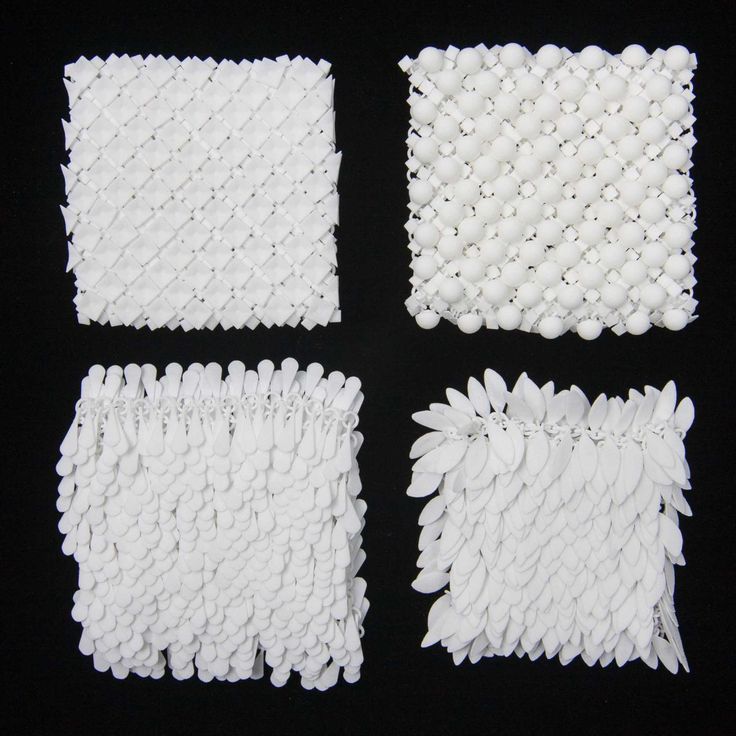
The author himself claims that he spied the idea here: Shorey Designs.
The essence of the method is very simple. We create a 3D model of a fragment of the future canvas, then arrange a lot of fragments so that we get a whole canvas. We start the slicer and prepare the G-code. Before sending it to the printer, you need to insert a pause and raise the extruder before printing a certain layer. The printer will stop during operation. At this point, we cover the printed layers with a mesh cloth. We continue to print. Due to the presence of large holes in the fabric, the layers of plastic will interlock with each other, as in conventional printing, and the mesh fabric will be firmly integrated into the parts.
Modifying G-code
I use Cura version 3.2.1 as a slicer. 3D printer - homemade H-bot controlled by a board based on ATmega2560 (RAMPS 1.4) with Marlin firmware.
To pause the printer, there is an M25 command. Command for lifting in Z by 20mm: G0 Z20. It is noteworthy that the M25 must go before the ascent, otherwise the next command is processed first. Why this happens is a mystery to me, apparently somehow connected with the processing of commands by the printer.
Add commands to G-code:
Operation automation
Manually searching for the required line in the G-code file and inserting commands is not the most modern solution, I thought and wrote a simple program that allows you to open and view toolpaths.
For the convenience of viewing the layers, the "explode" command is provided, which allows you to visually increase the distance between the layers of the model. After pressing the "insert pause" button, the distance between the marked layer (red) and the previous one increases. This means that the print will be interrupted precisely between these layers.
To understand where one layer ends and the next begins, I used the comments that Cura kindly provides in its output files.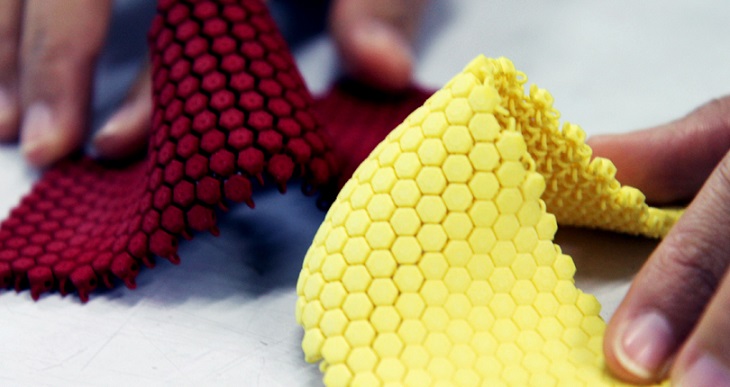 The keyword ";LAYER:X" allows you to accurately find the boundaries of layers in a text file.
The keyword ";LAYER:X" allows you to accurately find the boundaries of layers in a text file.
Pressing the "write file" button allows you to save the modified G-code in the specified location.
Save the file to the SD card and bring it to the printer.
It's funny that only when preparing this article, I came across a video that tells how you can do the same thing using standard Cura tools ... But the process has already been started, it's too late to slow down! Here, starting at 7:30, it is described in detail how to do it. Well ... hurry up - learn how to parse G-code!
Trying to print
Formation of the first layers. We print on glass. Heated table. Table temperature 60⁰С, printing temperature 220⁰С. The print material is PLA plastic. Layer height 0.2mm.
During the pause, lay down the fabric and fix with magnets. Since the table is aluminum (paramagnetic), we put the magnets on the top and bottom sides of the table. Fixation is made in 4 places, in the corners of the part. This is quite enough. The main thing is not to place them too close to the print area, otherwise the magnets will stick to the print head.
After 40 minutes, this is the structure. The thickness of each 6 carbon element is 1mm. The gap between the elements is 2mm.
In this experiment, tulle was used as the backing fabric. It is a lightweight mesh fabric of medium stiffness, woven from polyester threads.
Experiments have also been made with mosquito net printing. In the hardware store, there were two types of them: fabric and fiberglass. Fabric mesh is softer than tulle, but has greater mechanical tensile strength, as well as less elasticity. The fiberglass mesh is harder than tulle, its mechanical strength is the highest of all participants in the experiment.
Hexagonal sequin printing on fiberglass mosquito net. The gap between the elements is 1mm. The matrix is very hard.Clearance is clearly not enough.
Round sequin printing on fiberglass mosquito net. The gap between the circles is 2mm. It has a lot of flexibility, but there is too much unfilled space between the sequins.
After several test prints, the fabric mesh was chosen. She formed the basis of the matrix of smart sequins. The resulting matrix can bend in all directions.
The video demonstrates the operation of the program, the printing process and the final result.
Conclusion
The method of printing on mesh fabric proved to be very good. This is an ideal solution for our task, because the fabric substrate allows us to weave conductive threads into it, which are used to provide electrical connection between the individual sequins of the matrix. Moreover, the formation of a “pattern” of conductors can be carried out at the preparatory stage.